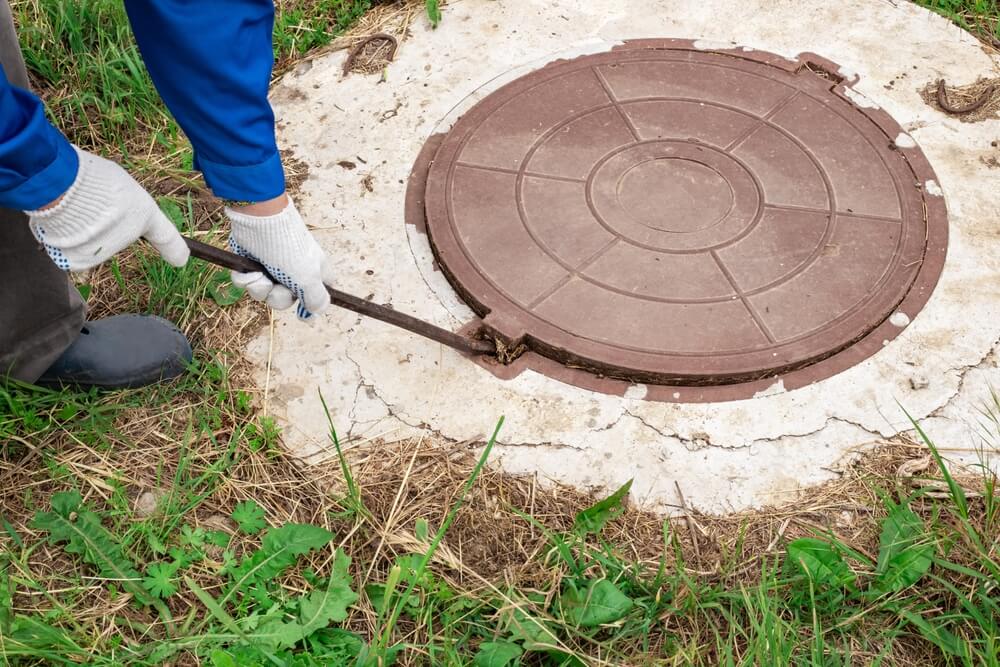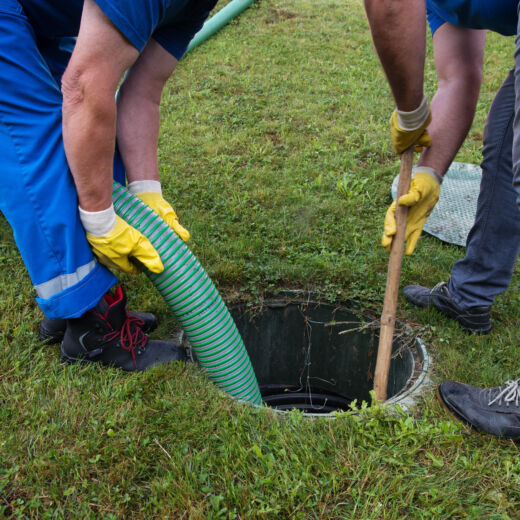When your toilets won’t flush, drains overflow, or wastewater begins creeping into your home, it can be a stressful ordeal. While septic backups can happen, the good news is that they are almost always preventable with the right maintenance and regular septic inspections. Other preventative measures like installing a septic tank alarm also help reduce the risk of a complete backup.
Septic backups can lead to costly repairs and potential health hazards, which is why it’s important for homeowners to understand what causes a backup and know the signs. Keep reading to learn more about the causes and signs of septic backups and how to fix them.
Understanding the Components of a Septic System
Simply put, a septic system is an underground wastewater treatment structure that processes household waste. Within this system is a set of components that work together to create an effective and safe way to clear out waste. The main components include:
The septic tank:
- A buried, watertight container, usually made of concrete, fibreglass, or polyethylene.
- Collects household waste from toilets, sinks, showers, and laundry.
- Separates solids (sludge) and floating scum from wastewater.
- Uses natural bacteria to begin breaking down organic matter.
The drain field:
- A network of perforated pipes or chambers laid in gravel-filled trenches.
- Receives partially treated water (effluent) from the septic tank.
- Allows effluent to slowly filter through the soil, where natural processes further purify it.
- Prevents surface water contamination by returning clean water to the environment.
How a septic system works:
- Wastewater flows from the home into the septic tank.
- Solids settle at the bottom (sludge), oils and fats rise to the top (scum), and the liquid (effluent) stays in the middle.
- The liquid effluent exits the tank and goes into the drain field for final filtration by the soil.
- Bacteria and microbes in the soil break down remaining contaminants, preventing groundwater pollution.
Common Causes of Septic Tank Backups
Being aware of why septic backups happen can help homeowners prevent them. Here are some of the most common reasons:
- Overloading the System – Flushing non-biodegradable items, such as wipes, feminine hygiene products, or even excess food waste, can overwhelm the septic tank, leading to clogs and backups.
- Insufficient Maintenance – Regular septic inspections and pumping are crucial for maintaining a healthy septic system. A neglected system can become clogged with sludge and scum, leading to backups.
- Drain Field Problems – If the drain field becomes saturated or clogged, it can no longer effectively process wastewater, resulting in backup into the home.
- Grease Buildup – Pouring grease down the sink can cause clogs in pipes and the septic tank. Grease solidifies, creating blockages that can lead to backups.
- Failing Pump – For homes using a pump to move wastewater, a malfunctioning pump can result in backups.
- Tree Roots – Trees and shrubs can send roots into the septic system, particularly if the drain field is nearby. These roots can invade pipes, causing blockages and damage.
Signs of Septic Tank Backup
Being aware of the warning signs of a septic tank backup can help you address the issue before it becomes a serious problem. If you notice any of the following, be sure to contact a certified technician for professional septic services.
- Sewage Backup – The most obvious sign is sewage backing up into toilets or drains, which is a clear emergency that requires immediate attention.
- Slow Drains – If there is no sewage backup but you notice multiple drains in your home are draining slowly, it could indicate a backup in the septic system.
- Unpleasant Odours – Foul odours near the septic tank or drain field can signal that the system is not functioning correctly.
- Pooling Water – Water pooling or standing in your yard near the septic system or drain field indicates a failure in the system.
- Gurgling Sounds – If you hear gurgling sounds in your drains, it may suggest air trapped in the system due to a blockage.
- Lush Grass – A greener patch of grass over the drain field may indicate excess nutrient flow from a failing system.
How to Fix Septic Backups
If you suspect a septic tank backup, act quickly. The more the septic system is used – whether through showers, laundry, dishwashing, or flushing toilets – the more pressure builds within the tank and pipes, exacerbating any existing problems.
Over time, a minor blockage or full tank can escalate into a major backup, leading to sewage spilling into your home or yard, costly repairs, and potential environmental hazards.
At the first sign of a backup:
- Call a Professional – Always consult a licensed septic tank service provider. They can conduct an inspection, determine the cause of the backup, and recommend appropriate solutions.
- Pumping the Tank – If the tank is full, it may need to be pumped. This removes sludge and scum, restoring proper function.
- Clear Blockages – If tree roots or grease buildup are causing blockages, a professional can clear these obstructions from the pipes.
- Repair or Replace Components – If your pump is failing, it may need repair or replacement. Likewise, damaged pipes or the septic tank itself may require fixing.
- Improve Drain Field – If the drain field is failing, it may need to be remediated.
- Implement Preventive Measures – To avoid future backups, be mindful of what goes down your drains. Regular septic inspections and pumping every 3-5 years can help maintain your system.
If you don’t already have one, your septic technician may recommend installing a septic tank alarm. Installing a septic alarm is a proactive way to prevent backups by alerting homeowners to potential issues before they escalate. These alarms monitor the water level inside the septic tank and trigger a warning if it rises too high, indicating that the system may be nearing capacity or experiencing a blockage.
Early detection gives homeowners the chance to address problems before wastewater starts backing up into the house. With a septic alarm in place, you can respond promptly to signs of trouble, saving time, money, and the headache of dealing with emergency repairs.
Key Takeaways
Septic tank backups can be disruptive and costly, but understanding their causes and signs can help you take preventive measures. If you experience any signs of a backup, contact SepTech immediately to address the issue before it escalates. Proper care and attention will ensure your septic system remains a reliable waste management solution for years to come.




